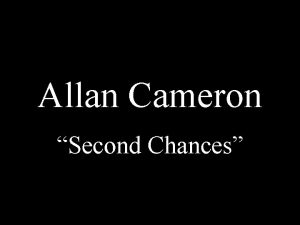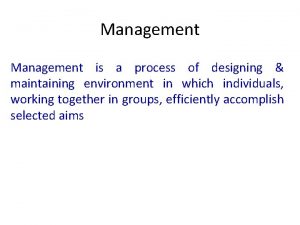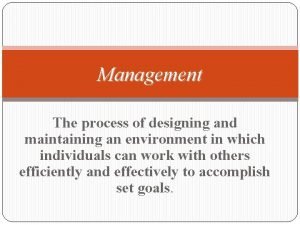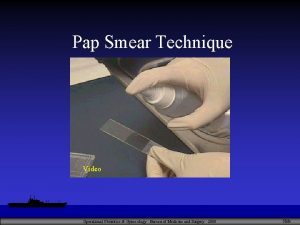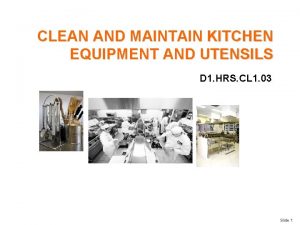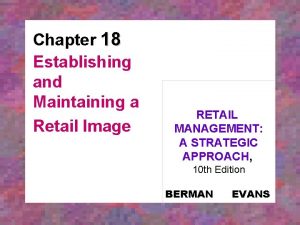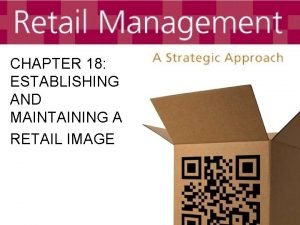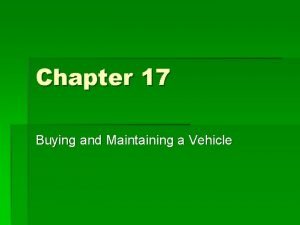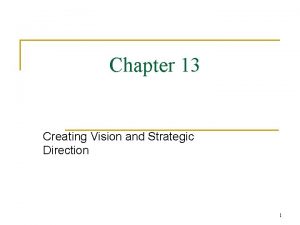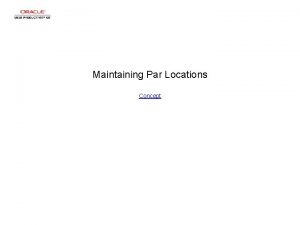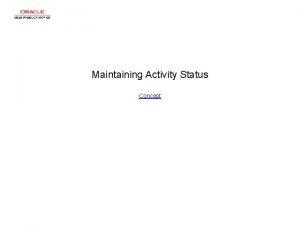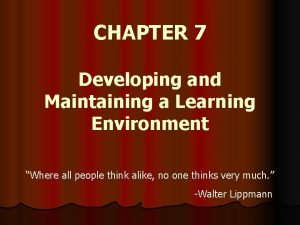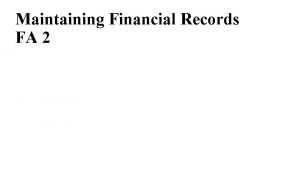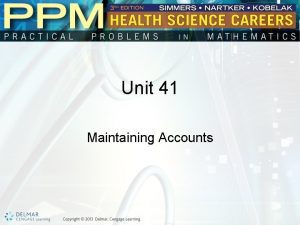Developing and Maintaining a Learning Environment Dr Ayers
















- Slides: 16

Developing and Maintaining a Learning Environment Dr. Ayers HPER 4480 Western Michigan University

Teaching Functions Management Arranging the environment for learning and maintaining/developing student -appropriate behavior and engagement with the content Content What is to be learned GOOD MANAGEMENT IS NECESSARY BUT NOT SUFFICIENT FOR EFFECTIVE TEACHING IS AN INTERDEPENDENT PROCESS Goal of good management system High level of engagement in appropriate tasks

Routines -Customary way of handling tasks (usually daily tasks) -Establish expectations to mold S behavior Locker room, pre-class, lesson, end-of-lesson -Introduce and practice until “routine” -Must be reinforced consistently

Rules -General expectations for behavior -Teach as concepts (across a variety of +/- situations) -Guidelines: Developed cooperatively w/ T and Ss Stated positively Make explicit (post in facility) Reinforce consistently and fairly Few in number (3 -5)

Gaining/Maintaining S Cooperation Plan progressive experiences toward learning environment goal 142) K-2/3: Compliant, want to please teacher 2/3 -5/6: Compliant, need less management time 5/6 -9/10: Peers most important, motivation becomes an issue HS: Maturation results in less mgmt time (Box 7. 2, p.

Positive more effective than negative Teach expectations, reasons for rules, address problems constructively/cooperatively Inappropriate behavior is not a personal threat Be caring, concerned, firm Rely on instruction/persuasion, not power/assertion Know your own expectations Watch your cooperating T this semester; what is ok? What does (s)he let go? Clarity→consistency Know the ultimate goal for S behavior Think long-term; what do you want next year? 2 yrs?

Share your behavioral expectations in advance Do not wait on misbehavior to teach good behavior Help Ss internalize appropriate behavior Explain WHY these rules exist Encourage S participation in rule/behavior expectations Teach rules for learning tasks too -How do you actually practice a skill? -How do you work with others? -What do you do if you infringe on others’ space? -How do you get T attention for help? Management is ongoing Continually work to help Ss achieve self-control

Developing Self-Control & Personal Responsibility National standards highlight this aspect 5: Exhibits responsible personal and social behavior that respects self and others in physical activity settings 6. Values physical activity for health, enjoyment, challenge, self-expressions and/or social interaction Nature of our setting fosters personal/social skills -Moving from external to internal control →decision making skills -Guiding Ss to higher level functioning is part of physical educators’ professional responsibility

Hellison’s Developmental Levels 0: Irresponsibility Unmotivated, undisciplined, denies personal responsibility, verbally or physically abusive of others, interrupts, off task on a continuous basis, requires constant supervision 1: Self-control Not highly engaged in the lesson but not disruptive, does not need constant supervision, goes through the motions of compliance 2: Involvement Demonstrates self-control and an enthusiasm for the subject-matter; willing to try new things and has a person definition of success 3: Self responsibility Capacity to work without direct supervision; can identify own needs and interests and is independent in his/her pursuit for them 4: Caring Cooperative, supportive and caring about others; willing to help others 0: Irresponsibility Transfers responsible behavior to life settings outside the gym; personal responsibility for actions

Strategies emphasized in Hellison’s model -Create awareness of appropriate behavior & goals -Provide opportunities for Ss to reflect on their behavior relative to behavior goals -Provide opportunities to set personal behavior goals -Establish consequences for both +/- behavior -Include Ss in group processes to share T ‘power’ -Help Ts interact with Ss in growth-producing ways

Behavior Modification (Box 7. 4, p. 147) Clear expectations and reinforcement Stage One Order a S to desist (stop behavior) Have S state rule being broken State expected behavior Hairy eyeball Proximity Allow S to choose work area to avoid temptation Time out Put S at end of line/group (go last)

Stage Two Conference with S Isolate S in hall/away from class Send home note Call parents Detention Remove privilege Stage Three Deny special class treat (free time at end) Create behavioral contract Send S to office Corporal punishment

Ineffective Management Factors Transition from T- to S-centered control challenges -Overuse of external rewards -Failure to withdraw external rewards -Lack of flexibility in rules, regulations & expected behavior for different contexts -T willingness to have a “busy-happy-good” environment

Authoritative Management Ts have a firm but flexible management position -Rules, procedures expectations context-dependent -Expectations vary by class, content, student Ts teach self-directed behavior Internal control and self-discipline valued Ss gradually assume more self-responsibility -Transfer of responsibility for behavior goal -Create situations in which Ss demonstrate increasing personal responsibility

Group Processes Involve Ss in decision making -Include S input when novel situations arise -Remind Ss that THEY made rule when reinforced Resolve conflicts through discussion Real-time issue; very dynamic environment needed Role-playing to convey concepts -Allows Ss to ‘put themselves in another’s shoes’ -Make explicit what happens during ‘skit’ and then summarize lesson(s) learned

Final Points Prevention is the best medicine Withitness, overlapping, hairy eyeball, proximity Widespread class misbehavior -Stop class and specifically address problem(class desist) -Address problem -Identify as inappropriate -Focus Ss on desired task/behavior -STAY POSITIVE Treat Ss as you wish to be treated Be gentle; determine WHY behavior occurs, address problem, not person
 Rusty and the ayers rockettes
Rusty and the ayers rockettes The process of designing and maintaining an environment
The process of designing and maintaining an environment The process of designing and maintaining an environment
The process of designing and maintaining an environment Pap smear video
Pap smear video Ju ayers
Ju ayers Dreamtime story of uluru
Dreamtime story of uluru Jeanne ayers
Jeanne ayers Cuadro comparativo entre e-learning b-learning y m-learning
Cuadro comparativo entre e-learning b-learning y m-learning Financial environment in business environment
Financial environment in business environment Importance of records and reports
Importance of records and reports Building and maintaining a website
Building and maintaining a website Cleaning job sheet on kitchen premises
Cleaning job sheet on kitchen premises Disadvantages of straight traffic pattern
Disadvantages of straight traffic pattern Straight traffic pattern
Straight traffic pattern Interior pressure sensor chapter 17
Interior pressure sensor chapter 17 Maintaining a healthy body composition and body image
Maintaining a healthy body composition and body image Creating vision and strategic direction
Creating vision and strategic direction
